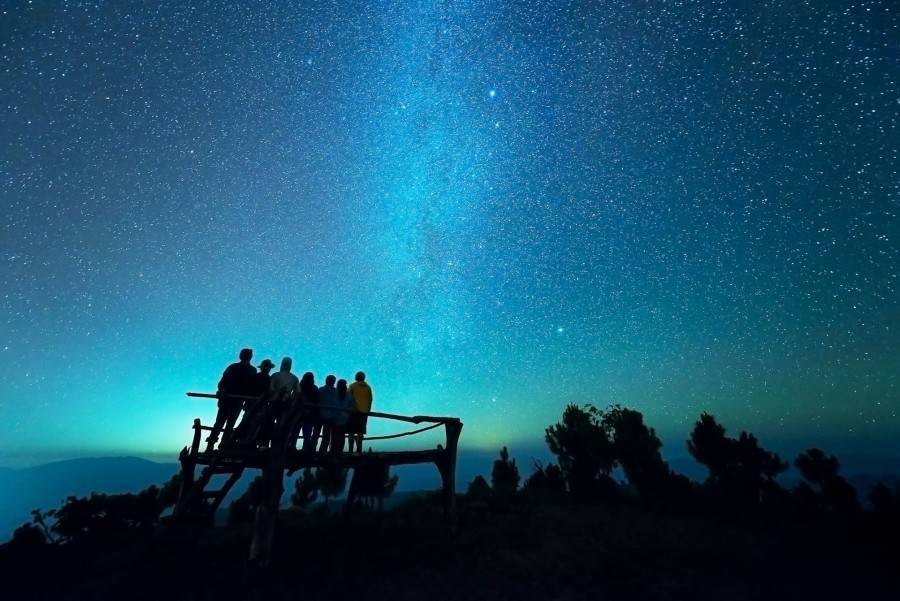Check out Part One in the Omnichannel Series, Why Activities Should Focus on Providing an Omnichannel Experience, featured by PhocusWire. Or download the Booking Channels Report for an in-depth analysis.
You’ve probably heard about omnichannel before. It’s been a buzzword in e-commerce and travel digital marketing over the last few years. But is it still a concept to you, something you have yet to apply to your marketing strategies?
If you continuously fill capacity and get lots of positive reviews, you might be thinking, “we already have a good thing going.” That may be true; however, the way travelers research, plan, and book their tours and activities is evolving.
Now, they can interact with your business at any given time, on any device and channel. There are infinite touchpoints where your marketing messaging can influence a traveler’s decision to book with you or not.
While you might stick with traditional methods or digital silo marketing, other travel brands are adopting an omnichannel approach. So there’s no time like the present to do the same. Otherwise, you risk getting left behind because of gaps in your overall guest experience.
To help you out, we’ll go over why omnichannel is important and how to get started with multichannel marketing— which includes:
- Booking channel statistics for tours & activities
- The traveler’s booking journey
- Characteristics of multichannel marketing
- An omnichannel marketing example
- Why omnichannel isn’t just online
- How to build an omnichannel strategy
Where tour and activity bookings come from
Not every traveler prefers to book on your tour website — despite popular opinion. We looked at our anonymized booking data and found that offline channels still take a large chunk of booking volume.

As you can see, it’s neck and neck between online and offline. Website bookings slowly pull ahead while walk-in and phone bookings drop, but offline direct remains the second-largest channel. At the same time, both offline and online partners continue to rise.
Based on this, there isn’t a clear winner. While the data can break down further into other categories, like social media, the main point is the same. Travelers make reservations using various avenues — hence the importance of omnichannel.
Find out when specific channels get the most attention in our Booking Channels Report for Tours and Activities.
Of course, every business is unique. Before you take this information and apply it to your tourism marketing strategy, you should deep-dive into your own analytics first.
A glimpse of the traveler’s shopping experience
Knowing the trending booking channels isn’t enough to deliver an omnichannel experience. You have to look at the entire path to purchase, from inspiration to conversion.
Understandably, it’s a daunting task — especially after we just talked about countless touchpoints. That aside, we can still get a sense of the booking journey by breaking it into five stages of travel, which are:

- Dreaming: The traveler starts thinking about a destination. Perhaps they’ve wanted to visit for a while and are finally ready to book the trip. Maybe they’re attending a wedding, corporate event, or family reunion. Or they could’ve seen captivating photos online and were like, “I have to go there now.”
- Planning: The wheels are turning. Now, the traveler is looking up things to do when they arrive. They might check out a few related posts from a travel influencer, browse a DMO website, download a destination guide (like Lonely Planet), or save their bucket list activities on Pinterest.
- Booking: It’s game time. The traveler knows what they want to do; they just have to find the right experience provider. They might turn to Tripadvisor to read reviews. Compare prices with your competitors. And reach out to you to ask more questions, check your availability, and eventually book.
- Experiencing: This stage is the best by a long shot. It’s your chance to wow them with a smooth check-in process, fun and friendly guides, unique souvenirs to take home, last-minute add-ons to make the experience even better, and an exciting tour or activity that they’ll remember for a lifetime.
- Sharing: It’s one thing to create a new memory for a traveler and another to give an experience they can’t wait to tell the world about. They might share photos or videos on social while tagging your company, write an online review, publish a blog post, or rave about it with family and friends.
For each stage, a traveler might bounce between various touchpoints before reaching the next step. Sometimes, they even go back and forth between the first couple of stages until they make a final decision.
And just because the traveler’s booking journey is complicated, it doesn’t mean the path to purchase should be, too. With an omnichannel marketing strategy, you can reduce friction and meet their needs at every step.
What makes an omnichannel booking experience
Let’s consider what makes excellent customer service — three words come to mind:
- Seamless: your guests don’t run into any issues, whether booking, paying, or during the experience. And if they do, you have back-up solutions to keep them happy
- Engaging: you build a relationship with your guests. Every conversation or interaction shows they matter to you. They ask you questions, and you get to know them in return
- Personal: your guests don’t feel like just another booking. Your guides know them by name, you pay attention to the details and tailor the experience to their preferences
Regarding omnichannel, every touchpoint is an opportunity for a seamless, engaging, and personalized guest experience. Outstanding service shouldn’t start after check-in, but rather the moment your audience becomes aware of the tour or activity.

In other words, no matter where they come across your business, your messaging should be consistent without being generic. It should be highly contextual, customized per prospect, and staged at the right time in their booking journey. Easier said than done.
Next, let’s look at an omnichannel example of how a company serves and reacts to an individual’s path to purchase.
Omnichannel marketing example for tours and activities
A London-based tour company — the London Experience — partners with a nearby hostel to promote their tours and activities around the Big Smoke. The hostel keeps brochures at their front desk for guests to take and flip through.
One of their guests — Hannah — spots the stack of brochures as she’s checking in. She grabs one and looks it over in her room. Curiosity sets in, so she searches for the tour company on Instagram. There are photos of guests in front of beautiful places like Horace Walpole’s Strawberry Hill.
So she visits the website by following the link, which is easy to spot on the profile’s bio. She ganders at the bicycle tour page but doesn’t take further action. The London Experience re-engages her with dynamic Facebook ads based on their custom audience in Facebook Ad Manager.

After a few days of seeing the ad in her newsfeed, Hannah finally clicks and gets taken to a dedicated landing page, similar, but more results-oriented than the page she previously saw. This time, she carries out the booking steps but abandons the cart right before checkout.
The London Experience retargets her with an email drip campaign. The first email goes out within 30 minutes, asking if she forgot to checkout. A day later, the second email offers a small discount. Both emails highlight the bicycle tour and use personalization tokens.
It works. Hannah makes a booking for two on their phone. At checkout, she pays the required 10% deposit with a credit card. Later, she fills out the guest form on a laptop, which asks if she has any dietary restrictions. Hannah puts none, and her friend enters gluten-free.
Ready for check-in, she pays the remaining amount without whipping out her card again because the company has her information stored. The guide greets them by name and asks about their travels. For lunch, Hannah’s friend is thrilled that there’s a special meal packed for her.
Both guests have a great time. When they get back to where they’re staying, they see a thank-you email from the London Experience, which ends with asking them to leave a Google Review. They happily oblige and see another compelling tour on the company’s listing.

It’s an overnight countryside tour. Since they already had a positive experience on the bike tour, they check availability for the next day. Home free! Hannah books and pays using Reserve with Google without taking out her card for the second time.
At any point, Hannah could’ve dropped off, but the London Experience brought her closer to booking at every turn with multichannel marketing.
Omnichannel is much more than digital optimization
In the above example, you might have noticed that every touchpoint isn’t just online — offline channels contributed as well. For instance, the hostel brochure first inspired Hannah, and her on-site interaction gave her such a good impression, she decided to book again.
Most tour operators get this part down pat. They have a welcoming ticket office, colourful pamphlets at the tourist information center, and partnerships all around town. Their guides are friendly and build relationships with the guests, despite meeting new ones all the time. And the tour or activity itself delivers an unforgettable experience.
But if you struggle in this area, then it’s a good idea to optimize offline first because it sets the standard for the other channels. After all, someone might be forgiving if your Facebook profile isn’t active, but not so much if they call ten times with no answer.
Here’s how you can do that:
- Hire tour guides who are passionate because they’ll come to work every day excited to show your guests a good time
- Establish your brand voice, and ensure your team follows it in all of their communications, including in-person
- Train your staff, give them a successful script for phone bookings, and show them how to convert walk-ins
- Invest in booking software to reduce their administrative tasks so that they can focus more on your guests
- Ask strategic questions on the Guest Form and use those details to personalize the experience — like what’s the special occasion?
- Unify your payment stack with a compatible POS system to make paying at check-in hassle-free
- Keep an organized space, and showcase your tours or activities with banners and brochures
- Invite journalists out to write about the experience for a travel magazine
- Choose offline partners who share your values, and are willing to collaborate on the best ways to promote to their audience
Now, the real challenge lies in blending offline with your online channels.
How to get started with an omnichannel strategy
Rome wasn’t built in a day, and neither will your omnichannel strategy. More devices and channels pop up every year — like smartwatches or smart speakers — so it’s a continuous testing and learning process. Even the big travel brands are working on it.
That said, you can still put your business on track for omnichannel by setting small, achievable goals. As long as you make little efforts here and there, you’ll see results. But where do you get started?
With your guests, of course.

You have to get to know them first before you can meet their needs across channels. I’m not talking about asking them questions in-person or via a social media survey — although both are great ideas. But rather, tracking their behaviour from the initial touchpoint and harnessing both your customer data and third-party.
With this information in one place — a single customer view — you can build in-depth guest profiles that are more realistic than outdated guest personas. This makes it easier to map out their path to purchase because you can predict their actions based on facts.
Speaking of which, getting a clear picture of the booking journey can help you pinpoint areas of overlap between touchpoints. Not only will this tell you where to establish a brand presence, but also where, when, and how to provide the next steps.
As for personalization and engagement, it’s impossible to be everywhere at once. Thankfully, with automation software tools — from customer relationship management (CRM) to chatbots — you can send the right message at the right time, without working around the clock.
Likewise, a booking management platform will automate your repetitive book tasks, such as sending confirmation and reminder messages. All while housing your different booking channels under one roof — including OTAs, your tour website, Facebook, Reserve with Google, staff bookings, and offline partners.
Final thoughts
Providing an omnichannel booking experience requires a shift in mindset. Too many travel brands get stuck in designing marketing campaigns for a specific channel or device. Instead, taking on a holistic approach allows you to deliver a meaningful guest experience regardless of the interaction.

Take your business to the next level
Online bookings. Flexible pricing. Outstanding support.



